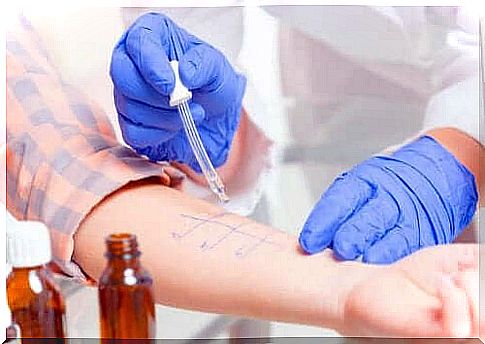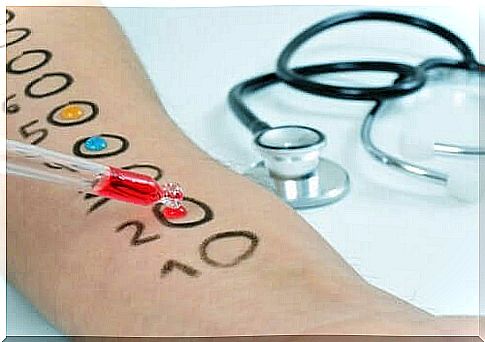Different Types Of Allergy Tests

In general, allergy tests are medical tests that include a series of procedures to determine a patient’s allergies or sensitivity to certain substances.
These tests can be performed in a variety of ways, and the most common methods include skin allergy tests (prick tests and epicutaneous tests), blood tests, and controlled exposure to the substance causing the problem.
Laboratory tests and exposure tests
Blood tests (or laboratory tests) are clearly different from other tests used to identify allergies. This is because only substances that are in the circulation at the time of testing are considered.
These allergy tests usually involve IgE antibodies, which are cells that are involved in protecting the body against substances that the body identifies as dangerous.
On the other hand, exposure tests are used, including prick tests, skin contact tests (epicutaneous tests) and controlled exposure to a substance suspected of causing problems. This allows the healthcare professional to check if the patient is having an allergic reaction.
To identify the allergen, the patient’s symptoms are examined, and then these are compared to previous allergic reactions. When it comes to exposure to a particular medicine, that medicine can be given orally, through the nose, or through the bronchi, for example – it all depends on the type of medicine.
Allergy testing for drugs

Generally, nursing staff perform this type of test when a patient has had an allergic reaction, but the cause is unknown. It should be noted that drugs can produce different symptoms depending on their properties.
Recent studies suggest that all medications may cause side effects (depending on the person), but there are some compounds that can produce more hypersensitivity than usual.
Some common symptoms of an allergic reaction to medicines include:
- rash
- spots
- tingling or burning in general or in the area where the medicine was applied
- fever, which may be of varying degrees of intensity
- eye leakage and stinging
- inflammation in the area where the medicine was applied
- anaphylaxis or an anaphylactic reaction if the condition is severe
During an allergy test, medical staff can review the effects of many types of medications. For each test, they decide which is the most suitable drug to try. In any case, the tests will be able to show whether the patient is allergic or sensitive to the given medicine.
Various skin tests in diagnosing allergies

The so-called prick-test is one common method of confirming a patient’s allergy and is used to detect hypersensitivity to food, animals and the environment.
The test usually proceeds as follows:
- First, the medical staff disinfects the patient’s skin from the inside of the forearm with alcohol.
- A small amount of the test substance is then injected onto the skin.
- Areas tested are marked and cleared of residues.
- Finally, the patient should wait for about 15 minutes to see if any allergic reaction occurs . During these 15 minutes, the patient should not scratch, touch or in any way affect the area of skin where the substance was injected.
Epicutaneous tests
These tests are also very common to determine allergies caused by food, animals, or other environmental factors.
- In this case, the doctor or nurse disinfects the patient’s back.
- He places patches containing the test substances on the patient’s back, and these patches release the compounds slowly over a period of 48 days.
- After this time, the patient should return to the doctor so that the patches can be posted and any allergic reactions may be examined under each patch.
Some important tips for those who are going for patch tests to detect allergies include:
- Once the tags are in place, do not scrape or wet the area where they are located.
- Avoid all strenuous physical activity that can cause sweating, as this can cause the patches to come off.
The patient should also avoid using wound tape and medications if possible.
Controlled exposure test
Physicians generally perform this type of test when a patient is being tested for an allergy to a particular drug or when they want to determine their tolerance to similar substances.
However, this method is more dangerous than the other allergy tests mentioned. Therefore, prior to these trials, medical staff will always carefully evaluate the full benefits and risks associated with this type of procedure.
Sometimes nursing staff may also need to repeat testing if a negative result is obtained, but this is not true. In this case, the expert evaluates what would be the best test for that situation and then tells the patient about possible options.









